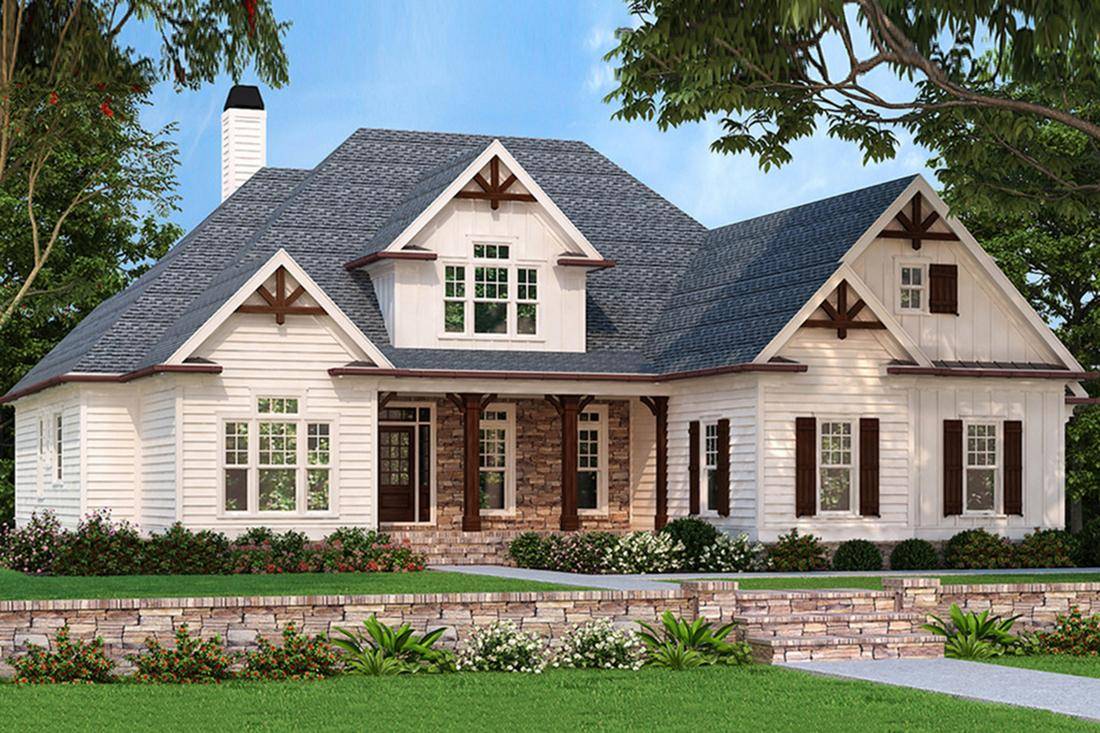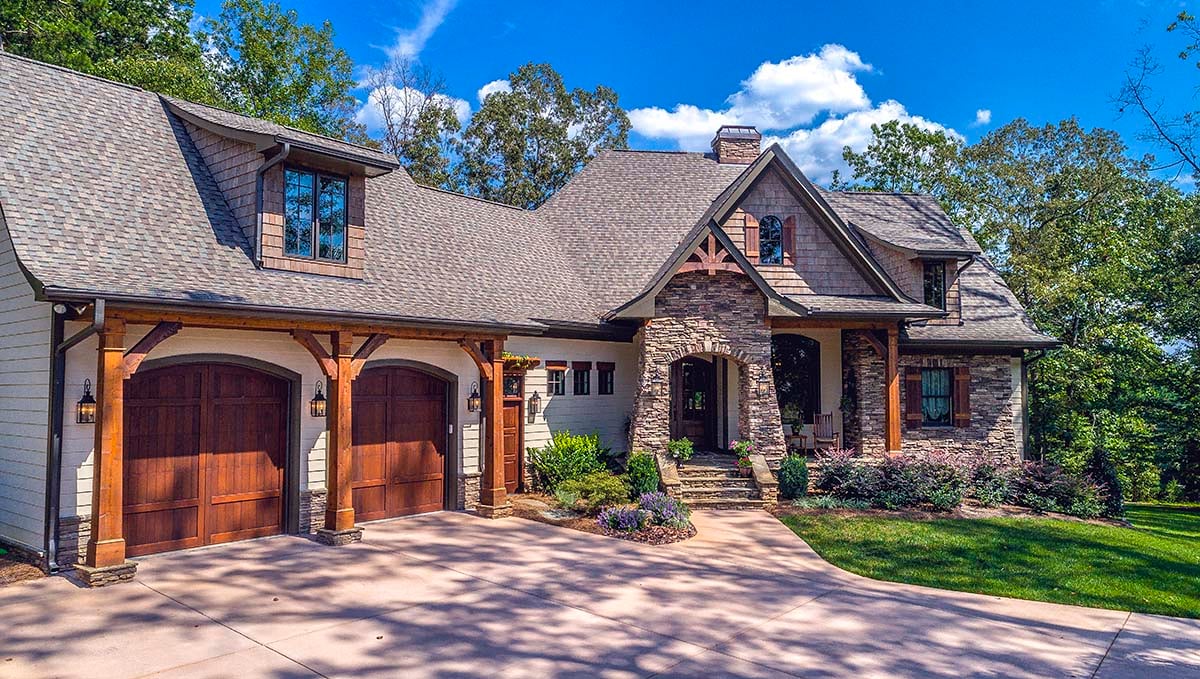10 Classic Features of a Craftsman House Interior
Table Of Content

This demonstrates its long-lasting influence on contemporary architecture and housing styles. While original craftsman houses are most heavily concentrated in the Midwest and Southern California, the architectural style can be found all over the country. If you're on the house hunt for a bungalow, you'll likely find that most designs incorporate covered porches or verandas to increase their living space despite small square footage indoors.
External features
Even though craftsman homes are simple and straight-forward, many feature artisan details that signify their unique and careful craftsmanship. This can include handcrafted woodwork, decorative brackets, and unique millwork on walls or around doors and windows. Other American bungalows nod toward the craftsman style with ample use of built-ins, wood trim, earthy materials (especially brick), and bay windows.
Cool Spaces: ‘Calm and cozy’ Craftsman homes of Staten Island - SILive.com
Cool Spaces: ‘Calm and cozy’ Craftsman homes of Staten Island.
Posted: Tue, 11 May 2021 07:00:00 GMT [source]
What Are Real Estate Development Loans and How Do I Qualify?
Stickley, a key figure in the Arts and Crafts movement, advocated for a departure from the ornate and mass-produced designs of the Victorian era. When talking about craftsman style house, some think of Mission style as well. The term “Arts and Crafts” is often used as a general term in the US, “Craftsman” and “Arts and Crafts” were almost synonymous and are often used interchangeably. Like Craftsman, Mission was a brand name but marketed factory-made furniture. The living room, the kitchen, and the dining room are the most important room where most of the life happens. In craftsman house plans, the master room is often placed on one and other bedrooms are at the other end of the house.
Law that ended single-family zoning is struck down for five Southern California cities
These also have roots in the Arts & Crafts movement but were built a little later (1910s-1940s). Mission Revival homes draw inspiration from Spanish Missions built between 1769 and 1823 in California. However, they share much in common with craftsman homes, including low-pitched gables, hipped roofs, wide eaves, and earthen materials. Both the Arts and Crafts style and the craftsman style house were a response to the mass-produced housing of the industrial revolution and over-stylized housing of the Victorian era. Most frequently seen in the Midwest, prairie-style Craftsman homes are the signature style of architect Frank Lloyd Wright. These homes incorporate low-to-the-ground designs similar to original Craftsman designs and feature pronounced horizontal lines and sprawling floor plans.
Each industry had its own luminaries, revered for their originality and inspiration — Stickley and his new furniture, for example. Designers at Newcomb pottery were heavily inspired by the plants and landscape of the deep South, and the intense colors and organic shapes present in the lamps and windows of Louis Comfort Tiffany are still highly coveted. While many original Arts and Crafts pieces still exist, they can be quite costly, as they are considered rare and highly valued antiques. Though, the inside of a Craftsman home would be an ideal place to decorate with a few original accessories or furniture to augment the era's style. With just a bit of online research, it's easy to find modern pieces created in the iconic style that showcase the same commitment to hand-crafted quality.
Relevant Articles

Art was an important consideration in the project, specifically the Latin American works that Deane has collected for years. “We wanted it to feel like there was a conversation between the art and the furniture,” Lavonne Walker says. A series of collages by Brazilian artist Nino Cais complements the soothing energy of the primary bedroom. In the family room, the blues and grays in the large Tiffany Alfonseca painting echo the palette of the textiles in the space. Her solution was to free up square footage, eliminate obstructions, and reposition appliances and fixtures in sensible ways for the homeowners, avid home cooks who entertain frequently.
Victorian Revival Style: Exuberant Color and Pattern
The craftsman style has its roots in the bungalow, a low, comfortable house that originated in India. Various designers, including Gustav Stickley, Charles Sumner Greene, and Henry Mather Greene, popularized this style. While a craftsman home is relatively easy to spot from the outside, there are also certain features that many homes from this era share beyond the front door.
Craftsman Bungalow
There were also architects in San Diego and Balboa Park such as David Owen Dryden, Irving Gill, and William Hebbard who built Craftsman style homes in Southern California. In the ensuing years, more architects around the U.S. began designing and building these style homes. Most craftsman houses are over 100 years old, and with all older homes, there are special needs you’ll have to account for. Craftsman-style homes draw from the natural world, and following this principle, craftsman-style houses display many of the same characteristics as cottage core. These homes maintain the natural characteristics with details like stucco exteriors, clay roof tiles, and interior archways emulating the Spanish mission churches of the American Southwest.
Originally, the primary bedroom had millwork and trim that were painted dark brown and walls painted dark gray. Leah and her teamed lightened the space up by painting the walls a dusty blue and giving the trim a creamy color. “We painted or wallpapered every wall in the house and changed out the lighting to bring more warmth into the space that previously felt a bit cold and dark,” Leah says. And because the home was in a protected zone, that meant that some design decisions needed to be approved. Historical approval was needed for any changes that were visible from the outside, like the windows and doors that were added.
The Arts and Crafts Movement emerged in the United States in Boston in the 1890s. Grander Craftsman-style homes can also be described as Arts and Crafts style. In the Midwest, which was influenced by Frank Lloyd Wright, the homes that have a Craftsman likeness are in line with the more horizontal Prairie style.
The dining room eat-in nooks and plenty of other built-ins, as well as stained wood trim, echo the aesthetics. “The elaborate detail of exterior rafter ends and brackets also drive up the costs of a true Craftsman home,” Yeley adds. The American Craftsman style, or the American Arts and Crafts movement remained popular through the 1930’s, but there is renewed interest in these smaller bungalow style homes today. Individuals and communities have both sought to preserve these homes and encourage new development in the Craftsman style.
Often, the underside of the roofs and eaves feature exposed rafters or decorative brackets, which add to the visual appeal and textural interest of the design. The American Foursquare was a late 19th-century transitional style linking the taller homes of the Victorian era with the horizontal homes of the craftsman era. The telltale signal is the home’s symmetrical, boxy design, with each floor having four rooms.
Comments
Post a Comment